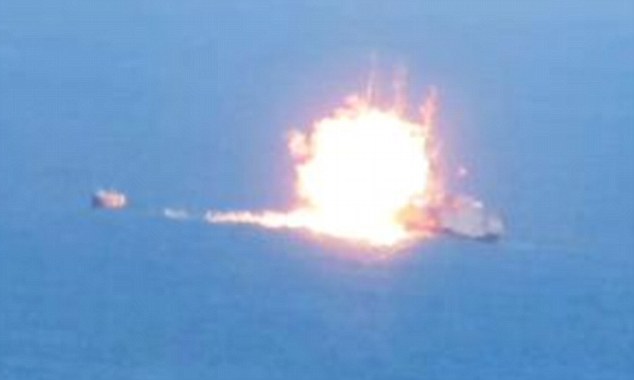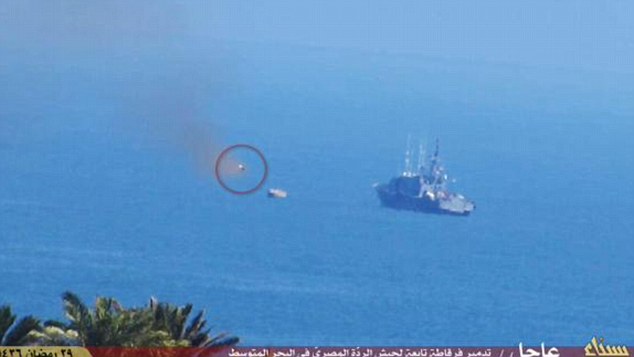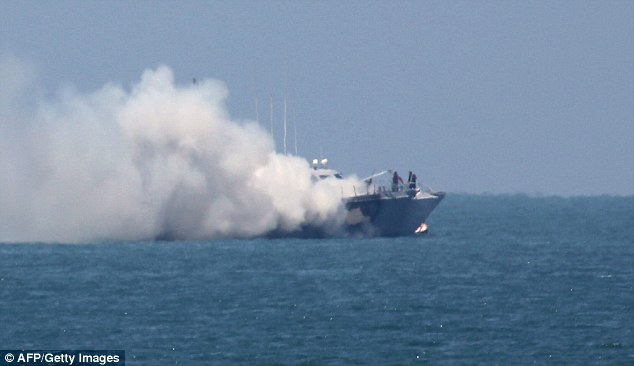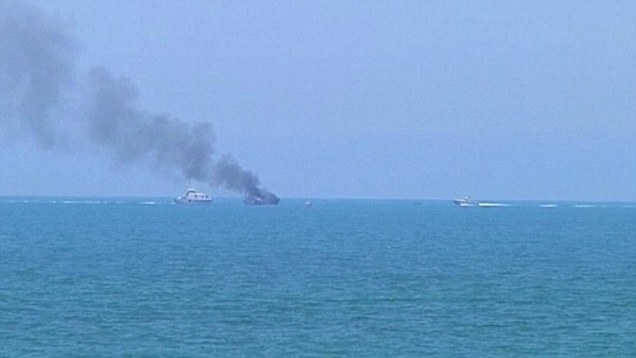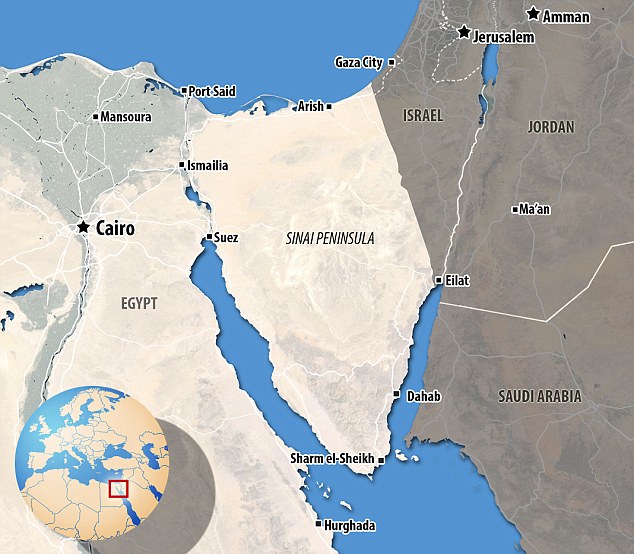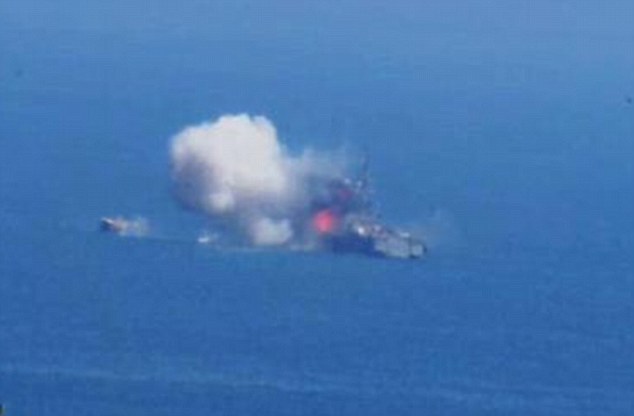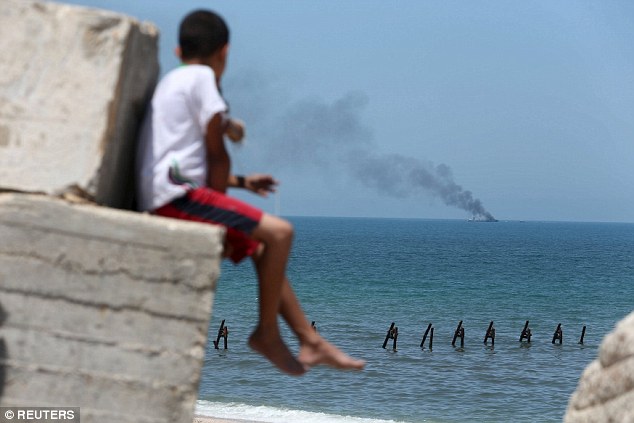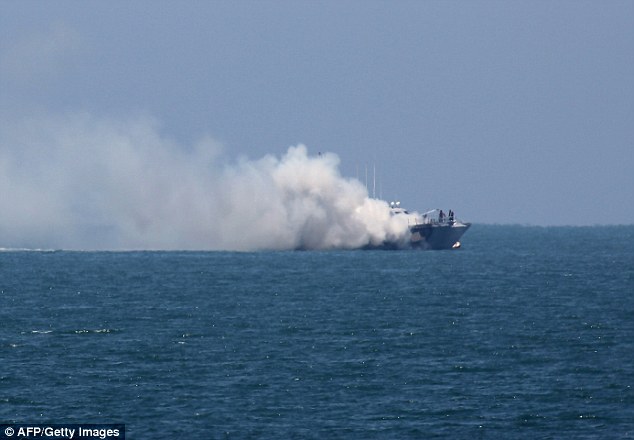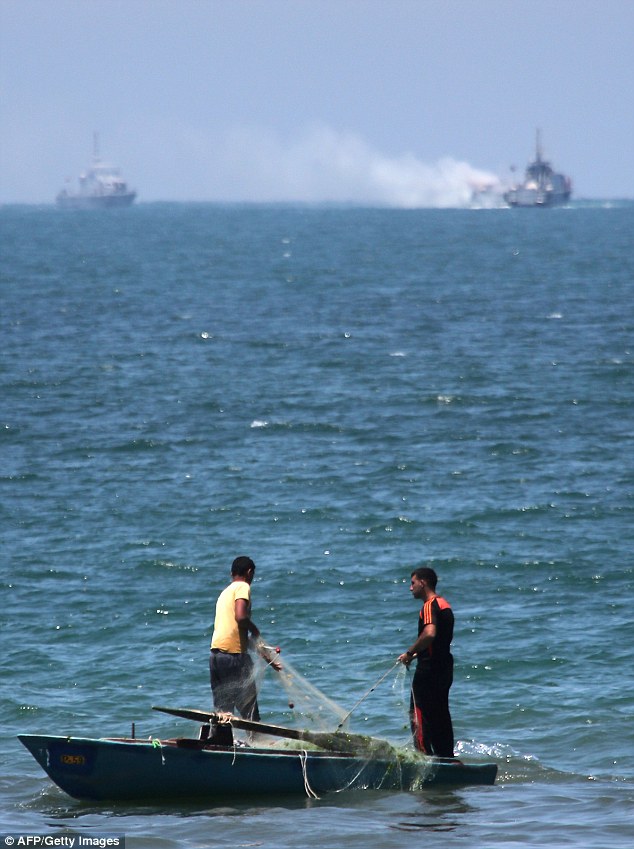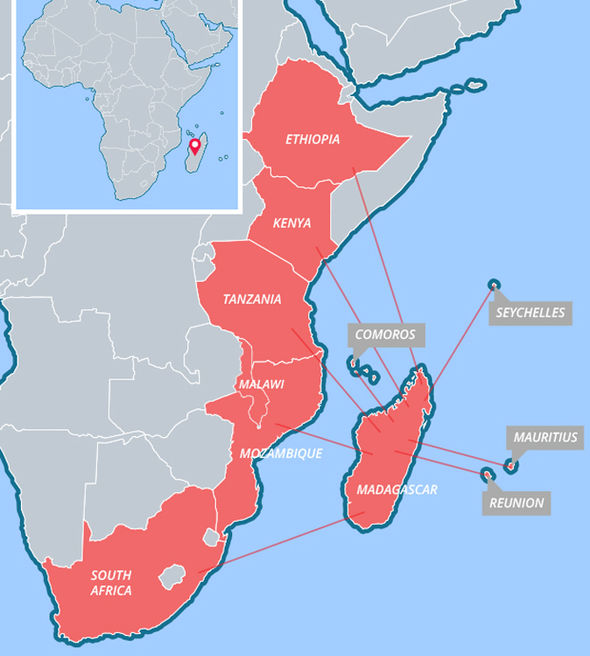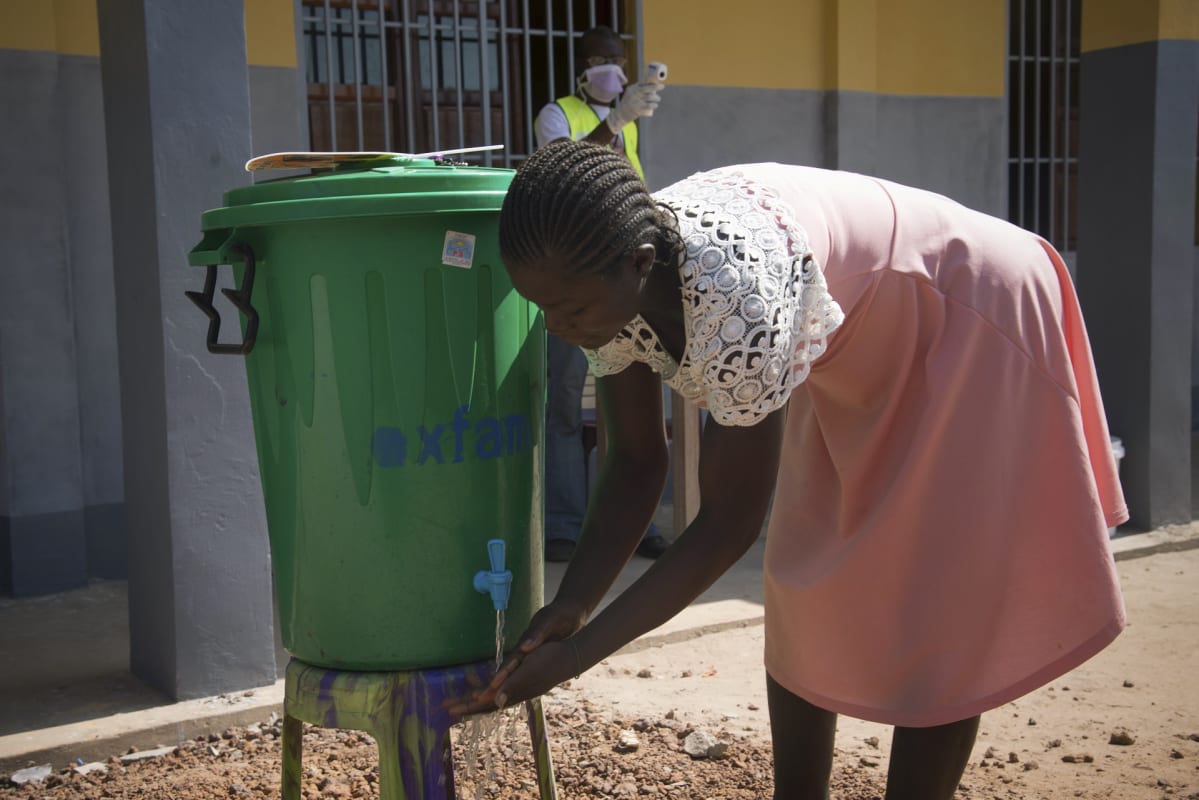STI_Tactical9mm
Kenraali
ISIS on epidemia, joten tänne (enkä muutakaan sopivaa löytänyt).
https://www.washingtonpost.com/blog...iliate-claims-attack-on-egyptian-navy-vessel/
CAIRO -- An Islamic State affiliate in Egypt has published photographs it says show a dramatic attack on an Egyptian naval vessel off the coast of the Sinai Peninsula on Thursday.

(SITE Intel Group)
A series of three photographs show what appears to be a missile or rocket fired on the boat, which was patrolling near the Egyptian town of Rafah, the Egyptian army said. The second picture captures the moment the vessel was hit, causing a fiery explosion. A third shows white smoke and the apparently damaged vessel.
[One year ago, Islamic State stepped into the global spotlight. Here's what has happened since.]

(SITE Intel Group)
It was unclear how far the vessel was from the shore, or from the militants who claimed they launched the attack.
In a statement, the Egyptian military confirmed an attack on the ship, but said no sailors had been killed. It gave no other immediate details.

(SITE Intel Group)
The militants, known as Sinai Province, said in an online statement that they had used a guided missile to fire on the boat. If true, the militants' possession of such high-tech weapons, which can also be used to fire on tanks, would present a significant challenge to Egyptian security forces who have already struggled to contain attacks by Islamist fighters on army and police personnel across Egypt.
Egypt is home to the Suez Canal, one of the world's most important waterway.
https://www.washingtonpost.com/blog...iliate-claims-attack-on-egyptian-navy-vessel/
CAIRO -- An Islamic State affiliate in Egypt has published photographs it says show a dramatic attack on an Egyptian naval vessel off the coast of the Sinai Peninsula on Thursday.

(SITE Intel Group)
A series of three photographs show what appears to be a missile or rocket fired on the boat, which was patrolling near the Egyptian town of Rafah, the Egyptian army said. The second picture captures the moment the vessel was hit, causing a fiery explosion. A third shows white smoke and the apparently damaged vessel.
[One year ago, Islamic State stepped into the global spotlight. Here's what has happened since.]

(SITE Intel Group)
It was unclear how far the vessel was from the shore, or from the militants who claimed they launched the attack.
In a statement, the Egyptian military confirmed an attack on the ship, but said no sailors had been killed. It gave no other immediate details.

(SITE Intel Group)
The militants, known as Sinai Province, said in an online statement that they had used a guided missile to fire on the boat. If true, the militants' possession of such high-tech weapons, which can also be used to fire on tanks, would present a significant challenge to Egyptian security forces who have already struggled to contain attacks by Islamist fighters on army and police personnel across Egypt.
Egypt is home to the Suez Canal, one of the world's most important waterway.

